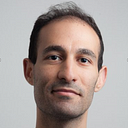Member-only story
Don’t Be Seduced by Counterfactuals

There’s a strange lure to thoughts like “what if…?” and “if only…”. When you skip a party to stay home with a movie, it’s natural to think “what if I’m missing out on the fun?”. And when you choose the party, you might think “wow it’s noisy here — if only I’d stayed home with a movie”.
These what-if scenarios are referred to as “counterfactuals”, and most of us are obsessed with them. Research is now starting to show just how seductive counterfactuals are and how much they can hurt you.

The pains of counterfactual curiosity
Earlier this year, a group of researchers from the UK and Japan published a study testing how much people would be tempted by the thought of what could have been.
Their experiment featured a game called the Balloon Analogue Risk Task (BART). In this game, people watch a balloon and decide whether or not to hit a pump to inflate it. Every time they hit the pump, they slightly inflate the balloon and gain points that they can convert to cash after the experiment. The problem is they don’t know exactly when the balloon will burst, and the bursting point is selected at random between 1 and 12 pumps. If the balloon bursts, they lose all the points they accumulated for that balloon, so the aim of the game is to bank your points before the balloon explodes.
Since the bursting point is chosen at random, the BART is mostly a game of chance. Every time you decide to inflate the balloon and gain a few extra points, you’re gambling on the fact that it won’t burst yet. But the researchers weren’t particularly interested in how many points each person gained. They were more interested in measuring how much people wanted to know the bursting point on a balloon after they banked points.
This is what they called “counterfactual curiosity”. It won’t help you to find out where a balloon would have burst if you kept on inflating. But how curious would you be to find out?
The researchers ran this experiment five times with a total of 150 people. When there was no cost associated with finding out a balloon’s bursting…
